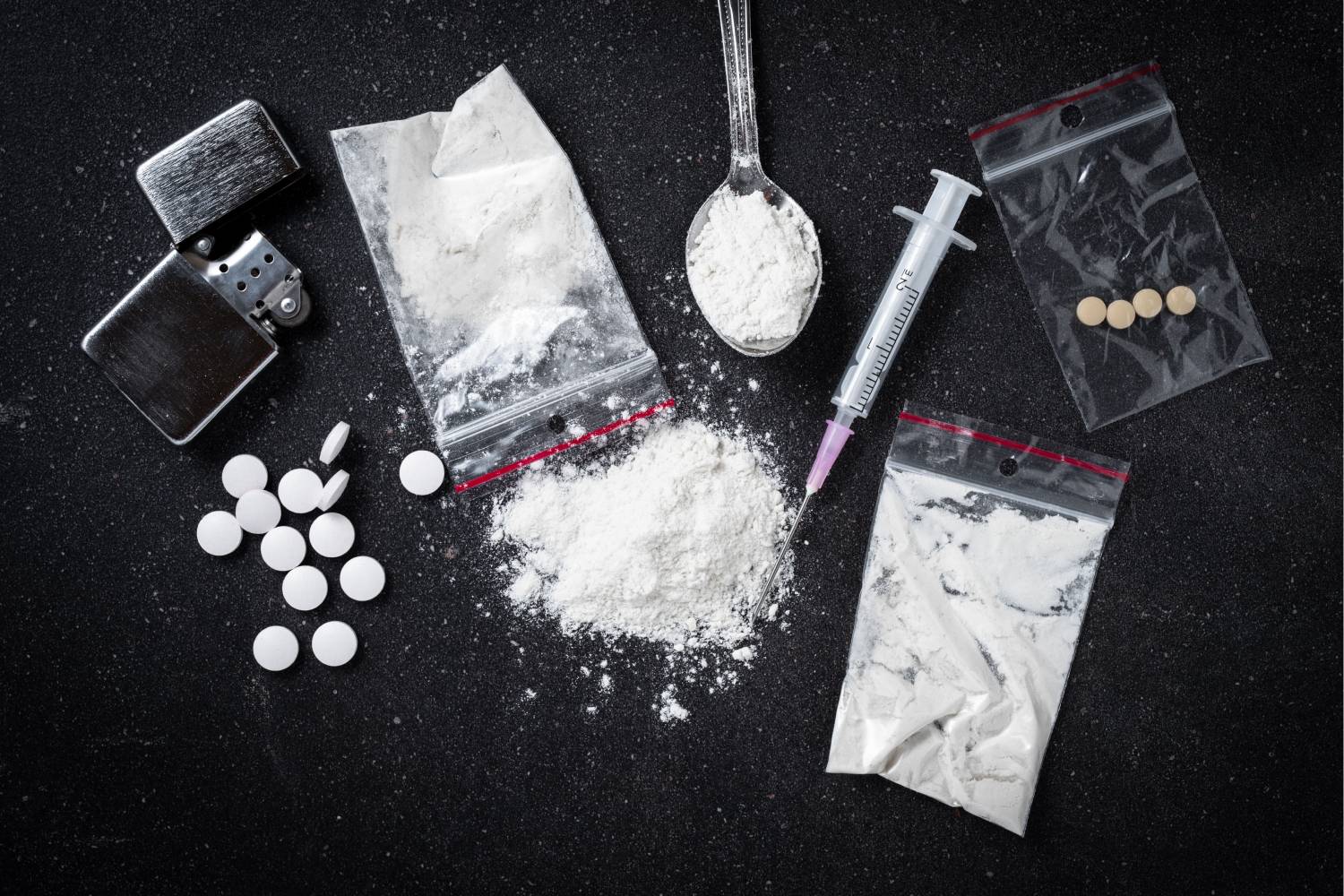When someone we love is struggling with a drug addiction, it is common to feel helpless and confused. We may wonder, “Why are they doing this?” or “Why are they choosing something that is hurting themselves and others in the process?”
As difficult as this is, it’s important to remember that addiction is not a choice made out of malice or ignorance. It’s a complex interplay of biological, psychological, and social factors that can pull individuals into its grip. Approaching the topic with compassion, understanding, and an open heart can pave the way for healing and support.
Instead of passing judgment, let’s embark on a journey to comprehend the intricacies of addiction and how we, as a community, can offer the right support.
Why Do People Do Drugs? 8 Reasons To Consider
Every individual’s journey with drugs is unique. While we may never fully understand every reason, shedding light on some known factors can guide our compassion and empathy.
1. Biological Factors
The brain is at the heart of our feelings, emotions, and even decisions — an organ guiding our every move. One significant area is the brain’s pleasure center, which rewards behaviors that promote survival, like eating and socializing, with feelings of joy and satisfaction.
Drugs can intensely stimulate this center, giving powerful sensations of pleasure. Over time, the brain can rely on these substances to feel good, leading to a cycle where seeking out the drug becomes a priority.
Genetics also plays a pivotal role. Some individuals might be genetically predisposed to addiction.
Research shows that they might inherit genes that make the effects of drugs more pleasurable or decrease the impact of withdrawal symptoms. This genetic lottery doesn’t mean someone will inevitably become addicted, but it might make the journey into addiction swifter for some compared to others.
2. Emotional and Psychological Reasons
Life is a mosaic of experiences — some uplifting, others heart-wrenching. Research suggests that many people turn to drugs to respond to or cope with trauma, mental health struggles, and emotional distress.
The burdens of past traumas, unresolved emotional pain, or even daily stressors can lead someone to seek solace in substances. For many, drugs offer a temporary escape, a momentary relief from the overwhelming feelings of despair or anxiety.
Yet, it’s essential to understand that this isn’t about seeking harm but rather a search for respite. Self-medication attempts to manage unbearable feelings or psychiatric symptoms that haven’t been addressed appropriately. Though offering temporary relief, this cycle can exacerbate the underlying issues, leading to a deepened reliance on drugs.
At SOBA New Jersey, we understand that turning to substances can sometimes seem like the only way out for many amidst the tumultuous storm of emotions. But we also believe in the strength of the human spirit and the potential for healing, recovery, and rediscovery.
3. Social and Environmental Factors
Our surroundings have a profound influence on our choices. They shape our perceptions, beliefs, and, often, our actions.
One of the most powerful social influences is the longing for acceptance and the fear of exclusion. Peer pressure isn’t just a term thrown around in school assemblies; it’s a genuine force that can lead individuals to adopt behaviors, including drug use, in the hope of fitting in or gaining approval.
Family dynamics play an essential role as well. Upbringing, family values, and even observed behaviors can shape one’s attitude toward drugs. Growing up in an environment where substance use is frequent can normalize the behavior, making experimentation seem less risky or taboo.
The sheer availability and exposure to drugs can be a determining factor. If substances are easily accessible and commonly seen in one’s community or social circles, the barrier to trying them can be much lower.
It’s the communal gatherings, the parties, and the weekend hangouts where drugs can be presented as a casual and regular activity, making it challenging for some to abstain.
4. Curiosity and Experimentation
From touching a hot stove as a toddler to exploring new hobbies as an adult, humans are inherently curious. This innate desire to explore, understand, and experience can sometimes lead to drug experimentation. Especially when it comes to teenagers and young adults, those who are curious about the effects of drugs may be acting on impulse.
The brain development at this stage correlates with an invincibility complex, where one might feel they are almost immortal, believing that potential negative results of dangerous or risky behavior won’t happen to them. This mentality can lead individuals to experiment without acknowledging the risks.
While not everyone who experiments will develop an addiction, understanding the risks can pave the way for informed decisions.
5. The Role of Mental Health
Our mental well-being is deeply interwoven with our choices, behaviors, and life experiences. When mental health struggles exist, they can push individuals towards substances as a way of coping.
This phenomenon, known as dual diagnosis, arises when substance abuse coexists with mental health disorders such as depression, anxiety, or bipolar disorder. In many cases, individuals might use drugs to manage or mask the symptoms of their mental health challenges, creating a cycle where one exacerbates the other.
This is why, at SOBA New Jersey, we emphasize the importance of holistic treatments. Addressing just one aspect, be it the addiction or the mental health disorder, isn’t enough.
True healing and lasting recovery demand an approach that caters to the entirety of an individual’s well-being, both mental and physical.
6. Pressure To Perform
In our society that is always expecting more from us, pressure to always be at the top, excel, and outperform can sometimes feel never-ending. This constant hustle, whether in the classroom, sports field, or boardrooms, creates tangible pressure.
The desire to perform optimally, to meet deadlines, and to exceed expectations might lead some to seek shortcuts, and this is where substances like stimulants come into play. Adderall, for instance, is a prescription stimulant drug for ADHD that is often misused to enhance focus and efficiency.
But while it might offer short-term advantages, the potential long-term harm and dependency can outweigh the benefits and interfere with our ability to accomplish everyday tasks as addiction takes over.
7. The Chemical Effects
The allure of the high, that fleeting euphoria, can be tempting. It’s a momentary escape, a burst of pleasure that promises an immediate reprieve from life’s challenges.
But herein lies the trap. While drugs can initially stimulate pleasurable feelings, they can trick our brains into a state of dependency. Over time, our natural ability to feel joy diminishes, and we become reliant on substances to recreate those moments of happiness.
The more we lean on these drugs, the harder it becomes for our neurotransmitters to induce pleasure on their own. It’s a dangerous cycle where chasing that initial high requires higher doses, leading to heightened dependency and a profound alteration in our brain chemistry.
8. The Cycle of Addiction
The journey from experimentation to dependency can sometimes be subtle and swift. It starts innocently enough — a curious taste, a momentary escape.
Yet, over time, the body and brain begin to expect and rely on the substance. This increasing reliance is known as tolerance, wherein one requires more of the drug to achieve the same effects.
But it doesn’t stop there. As dependence grows, the body negatively reacts when deprived of the substance, leading to withdrawal symptoms.
These can range from mild discomforts to severe physical and psychological challenges. The resulting pain and distress further drive the individual to consume the drug, reinforcing the cycle of addiction.
It’s a daunting path, but it’s crucial to remember that it’s not a one-way street. Recovery, though challenging, is entirely possible.
With individualized care, understanding, and the right tools, one can break free from this cycle. At SOBA New Jersey, we’re dedicated to providing that support, ensuring everyone has a chance to reclaim the life and happiness they deserve.
Recovery Is Possible: The Importance of Community
One of the pillars of successful recovery is the embrace of a loving and understanding community. Many find their road to healing in the strength of unity, the warmth of shared experiences, and the compassion of kindred spirits.
For anyone navigating the labyrinth of addiction, having a support system is not just comforting but also crucial. It’s the gentle reminder that they’re not alone, that there are shoulders to lean on and hands to hold.
At SOBA New Jersey, our commitment is unwavering. We’ve cultivated a sanctuary where individualized care meets the power of community and provides resources to support their loved ones through the process.
Our approach is rooted in understanding and personalized treatment, always with the belief that with the right support, anyone can reclaim the joy and purpose in their life. Encourage your loved ones. Approach them with an open heart, and together, let’s pave the path to recovery.
Sources:
Genetics and Epigenetics of Addiction DrugFacts | National Institute on Drug Abuse (NIDA).





